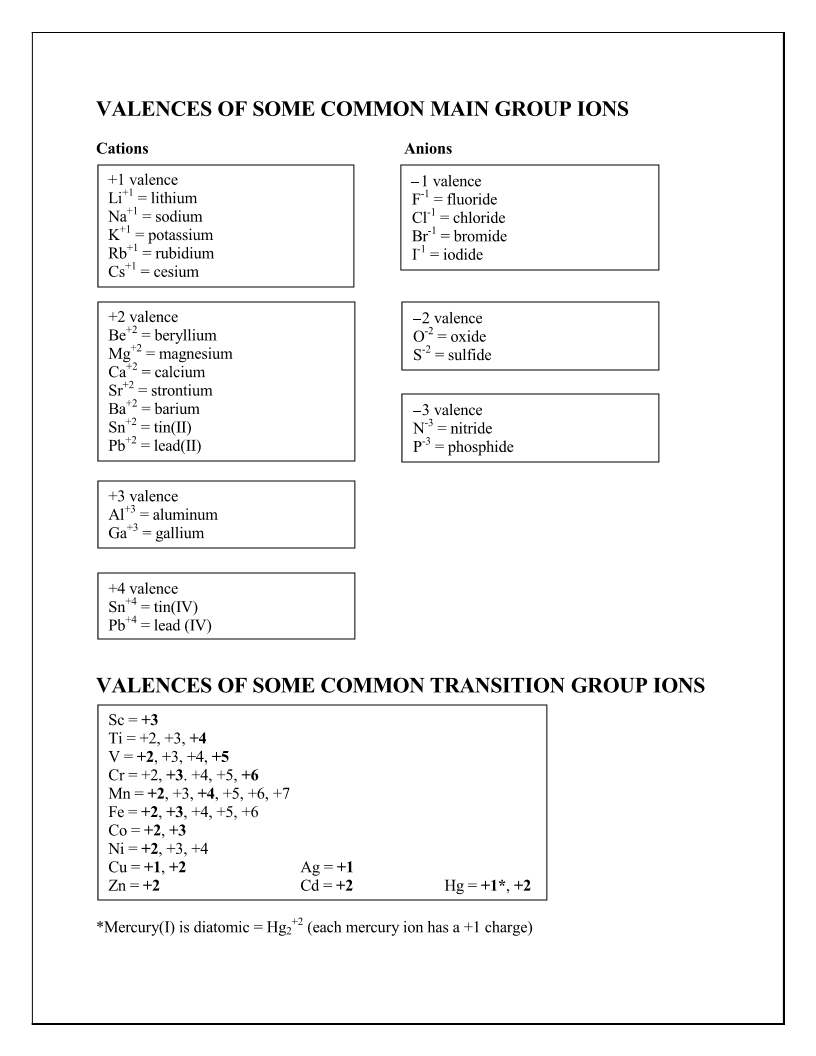
Valency
Valency of an element is a measure of its combining power with other atoms when it forms chemical compounds or molecules.
The combining power, or affinity of an atom of a given element is determined by the number of hydrogen atoms that it combines with. In methane, carbon has a valence of 4; in ammonia, nitrogen has a valence of 3; in water, oxygen has a valence of 2; and in hydrogen chloride, chlorine has a valence of 1. Chlorine, as it has a valence of one, can be substituted for hydrogen. Phosphorus has a valence of 5 in phosphorus pentachloride, PCl5. Valence diagrams of a compound represent the connectivity of the elements, with lines drawn between two elements, sometimes called bonds, representing a saturated valency for each element.
If the outermost shell has 8 electrons then the element is said to have a complete octet. By gaining, sharing and losing the electrons the atoms complete their outermost orbital and make an octet.
The capacity of an atom is described by the total number of electrons lost, gained or shared to complete its octet and it also determines the valency of the atom.
Chemical Bonding
The smallest particle of element is atom and the smallest particle in a compound is molecule. The force or the binding that keeps the atoms in the molecule combined during the formation of molecule is called chemical bonding. The concepts like that of Kossel-Lewis, VSEPR principle, valence bond theory, molecular orbital theory have been presented. In chemical bonding, it has more relation with orbitals around the nucleus and especially the valence orbitals.
Chemical bonds form if the resulting arrangement of the atoms has lower energy than the separated atoms i.e., atoms combine to attain a state of lower energy (potential) than that in the isolated ones, e.g. H2, P4, S8, H2O, C6H12O6 etc. Various changes in energy that occur when bonds form results from the movement of the valence electrons (the electrons in the outermost shell) of atoms.
Ionic bond
It involves the complete transfer of one or more electrons from one atom to another and is characterized by a large difference in electronegativity. An ionic bond is formed between an electropositive and an electronegative element.
Covalent bond
It involves the sharing of a pair of electrons between two atoms and is characterized by a small difference in electronegativity. A covalent bond is formed between two electronegative elements or could be generated between a less electropositive and an
electronegative element.
Metallic bond
It involves the free movement of valence electrons throughout the crystal and is also characterized by small difference in electronegativity. A metallic bond is formed between two electropositive elements
MPPCS Notes brings Prelims and Mains programs for MPPCS Prelims and MPPCS Mains Exam preparation. Various Programs initiated by MPPCS Notes are as follows:-- MPPCS Mains 2025 Tests and Notes Program
- MPPCS Prelims Exam 2025- Test Series and Notes Program
- MPPCS Prelims and Mains 2025 Tests Series and Notes Program
- MPPCS Detailed Complete Prelims Notes 2025

